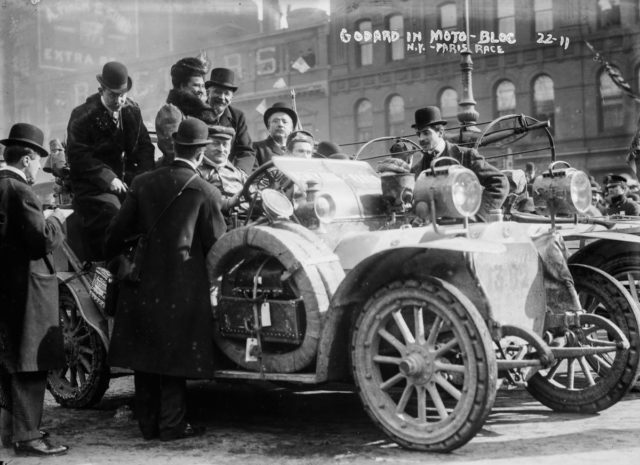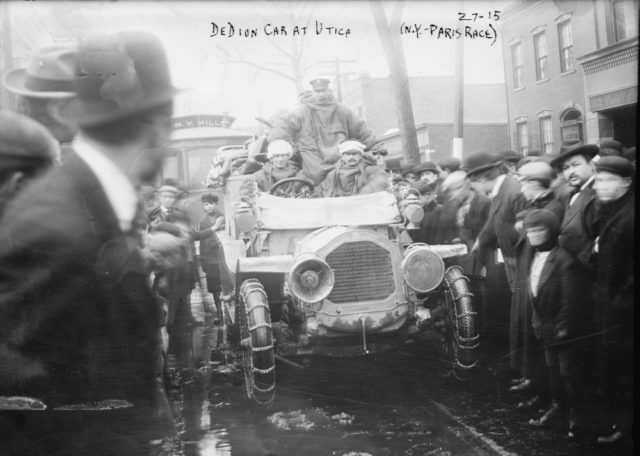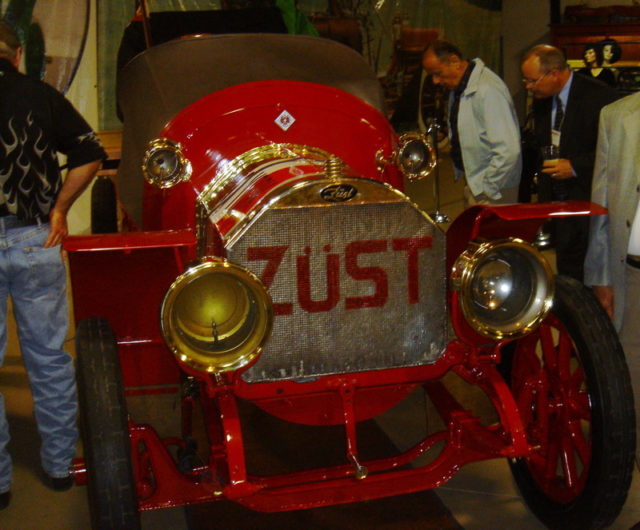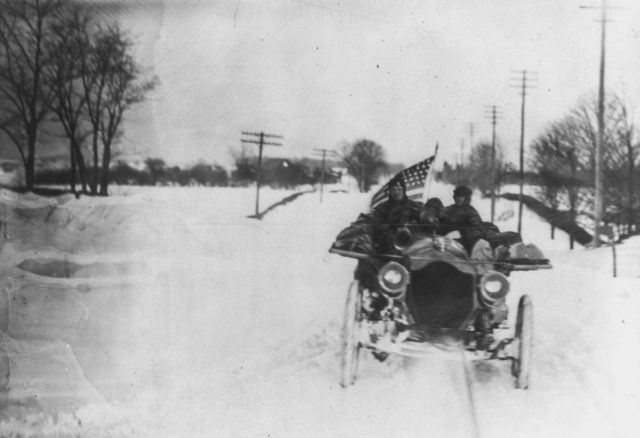In 1908 a rather peculiar automobile competition took place around the world and went down in history not only as a race but a monumental event.
The start of the race took place at Times Square, on a rather grumpy and gray morning, the 12-th of February. The participants made their attempts and traveled from New York to Paris. Considering the state of the automobile technology and poor road infrastructure at the time, the race was a huge bite for all of the participants.
Only three of the six competitors had completed the course. The winner was the American team, driving a 1907 Thomas Flyer.

The six driving teams competed under four flags. These were Germany, France, Italy and the United States. The French set off with the highest number of cars, as three distinct automobile manufacturers participated: De Dion-Bouton, Motobloc, and Sizaire-Naudin. Züst drove under the Italian Flag, and Protos were the Germans.

A gunshot announced the start of the historic race at 11:15 AM. The signal was 15 minutes late and this resulted in a funny anecdote related to Mayor George McClellan, who was supposed to fire up the starting pistol. He was late, and apparently, an impatient bystander did the job and the racers took off.

This certainly has been a promise for a wild race, filled with many difficulties and adventures for the driving teams.
“The planned route would take the racers across the United States, up through Canada into Alaska, over the Bering Strait (where race organizers hoped to survive the dreadful winter) to Siberia, through Russia and finally Europe and Paris”- reports the Mashable.
The event brought together almost 250,000 million people on the streets of New York City to witness the start of the contest. Considerably, that was more crowd than Adolph Ochs’ gathering for the very first ball drop in New York at the New Year’s Eve celebration, welcoming 1908.

The decision to have the race rolling in the midst of winter-time added to the challenges of the racers. On the route, there were realms that were dormant under deep snow, so drivers needed to stop very often and repair their cars. They also used locomotive rails when it was impossible to find the road.

The American Thomas Flyer took a lead when crossing the United States. The team managed to arrive in San Francisco in 41 days, 8 hours, and 15 minutes. In fact, this was the very first crossing of the US by an automobile in winter.

The route then took the drivers to Valdez, Alaska, by ship. The original idea was to move throughout Alaska and the Bering Strait, and arrive in Vladivostok, Russia. However, the American team declared it impossible to drive through Alaska, and the race was rerouted across the Pacific via Japan.
The German team was penalized
The driving resumed from Vladivostok, but by this point, there were only three competitors left: Protos, Züst, and the Flyer. The three teams faced another set of major challenges as passing through the tundra realms of Siberia and Manchuria. The roads had improved only in Europe, where Thomas arrived in Paris on July 30th, 1908, to win the race, having covered approx 16,700 km.

The Germans were already there four days earlier, but their reception was not very good. They have been penalized a total of 30 days for not going to Alaska and for shipping the Protos by railcar. This allowed the Americans a month to finish and win. And they did.

George Shuster was the only American to overcome the distance from New York to Paris in 26 days. The Italians were much belated, and they made it to Paris in September 1908. The victory meant huge recognition for Shuster, who in 2010 was also inducted into the Automotive Hall of Fame.
What inspired the historic race?
The New York to Paris Race followed another similar race that happened the year before. In 1907, the Peking to Paris automobile race was the first race of this caliber which boldly tested the new automobile technology.

The 1907 race was the first test, and the one in 1908 went on to demystify cars as fragile objects.

That was the point of the races. As automobiles were a rather new means of transport, this event made a twisting point. The race was of international interest and had a daily press coverage by the New York Times, and the Parisian newspaper, Le Matin. New York Times was also one of the co-sponsors of this grandiose event.
The significance of the rally was over the roof. It had established the reliability of the automobiles as dependable means of transport for the masses. They were no longer considered only as amusement objects of the high scale. Moreover, they stimulated investments in road infrastructure. A truly historic event in every sense of the word!
